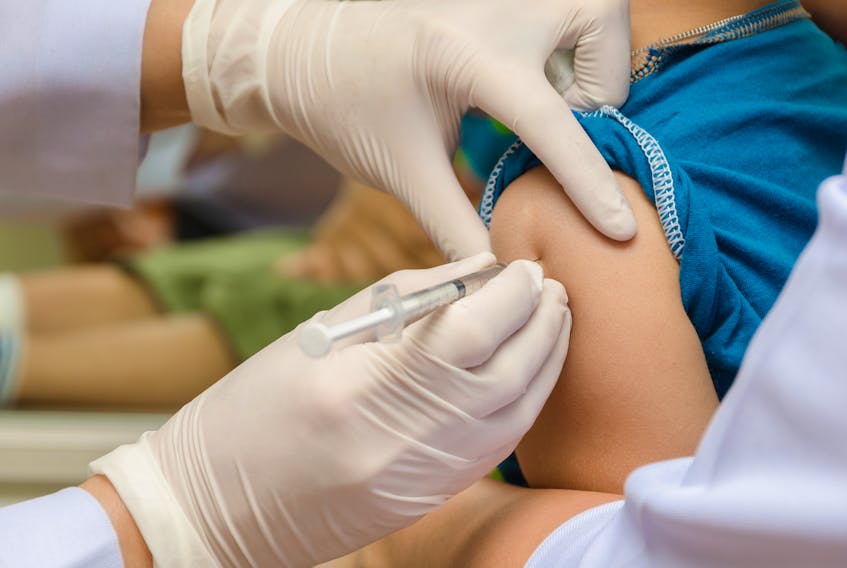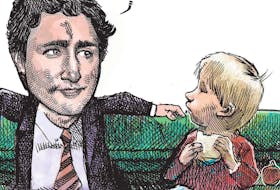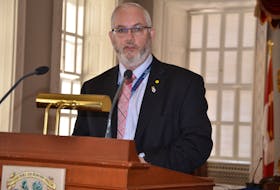He died at five years old. Too young for school, but not too young for measles. He would become just another statistic for everyone but his grieving parents.
They would have vaccinated him in a heartbeat, had such a safeguard been available. But everyone born before a vaccine was available in 1963 took chances with “ordinary” childhood diseases. Today, three generations are removed from the memory of children dying from measles; from the sight of children crippled from polio, should they be lucky enough to survive; from the fear of diseases that could, and sometimes would, kill a child.
Maybe today’s parents can be forgiven for ignorance, not ever having to deal directly with the common killers of children.
But for so many to ignore the proven science of vaccinations, including the MMR (measles, mumps, rubella) is unforgivable.
That Calgarians should have to be warned that someone with a contagious disease — someone with measles — visited various places in the city last week is simply outrageous.
I have little sympathy for people who put themselves above science and above the health of those with compromised immune systems who rely on herd immunity to keep them safe. While Canada reportedly has a herd immunity rate of 90 per cent, according to Dr. Theresa Tam, the country’s chief public health officer, 95 per cent is considered optimal.
The first vaccine against measles came 55 years ago, so it’s not like this is just an experimental trial. And it’s not as if vaccinations are an entirely new concept. Edward Jenner in 1770 realized that milkmaids who contracted cowpox were safe from smallpox, which, to this day, remains the only human disease to have been globally eradicated by vaccination, in 1980.
Polio should have gone the way of smallpox had misinformation and the politics of fear of vaccinations in Third World countries not kept it alive and crippling.
A study by the C.D. Howe Institute finds “a vocal few Canadians hold anti-vaccine views, but they are not the main reason for insufficient childhood vaccination coverage across Canada.” Authors Colin Busby, Aaron Jacobs and Ramya Muthukumaran, suggest “a much more sensible strategy to reverse falling vaccine rates among Canadian children would be to target parents classified as ‘fence-sitters’ — those who partially but not fully immunize their children.
“Recent outbreaks of infectious diseases are stark reminders of the dangers they pose and the need for expanded vaccination coverage. … This should also cause public health officials to take pause and look at the alarming status of vaccination coverage among Canadian children.”
Let’s forget the dry language of academic studies and focus on the reason I am so passionate about protecting children from preventable diseases. We take clean water, sanitation and safe food for granted. We believe childhood diseases are childish things. So, imagine you are the parents of an eight-year-old and a two-year-old. One early summer morning your older daughter complains she is not feeling well and has a sharp pain in her neck.
By the following day she cannot bend her head and she’s spiking a fever. She’s hot; her throat hurts, so she tries to drink a cold bottle of Orange Crush. The only way she can swallow is to sit up enough so that the liquid will run down her throat. It didn’t take long for the mother, a wartime nurse, to suspect the worst — polio.
A spinal tap confirmed the case. My parents were told there was no cure. They were terrified for her and their younger toddler who clearly had been exposed to one of the world’s most dread diseases.
I spent the rest of the summer locked up in an isolation hospital, which, by the time I saw my parents again, was filled with polio cases, all other communicable diseases having been sent elsewhere. All around me were sick and dying, crippled and breathless children. Iron lungs lined the back wall of the ward. It was 1953 and an epidemic of polio in Calgary had shuttered theatres, swimming pools and anywhere else crowds could gather.
When school resumed that September, there were empty desks. In the years following, it was not unusual to see crutches and built-up shoes for those children who were in a growth spurt when they contracted the disease. I was one of the lucky ones: both legs the same length, no lingering effects other than the peculiar loathing of mushy foods that make a slick passage down one’s throat. (I had also survived measles, whooping cough, tonsillitis, chickenpox and mumps.)
In 1955, Dr. Jonas Salk developed the first polio vaccine, followed in 1961 by Dr. Albert Sabin’s oral vaccine. Polio became a distant memory.
As a young adult in my first job with the Calgary Herald, I contracted influenza and having endured that vile disease, which flattened me for a couple of weeks, I get a flu shot every autumn. (And could we please stop calling an upset digestive system the “stomach flu.” Such language only serves to minimize the spectre of influenza.)
All this anecdotal evidence is personal. Don’t believe me if you wish.
Just pay attention to the hard science or risk a child’s life.
Catherine Ford is a Calgary writer, commentator and author.
Copyright Postmedia Network Inc., 2019









